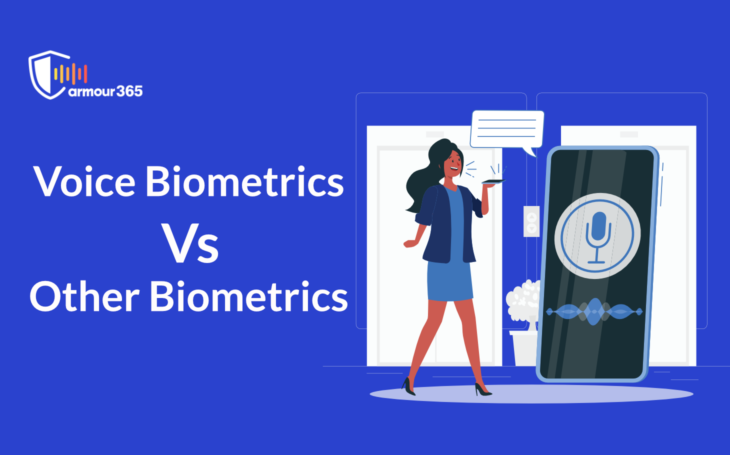
IBM estimated that a cyber-attack costs a company $6.71 million per breach on average. The more and more a company handles digital information and user information, the access to those data has to be tightened from the core. There are a number of ways to authenticate a user identity before accessing the data, but biometric verification has gained huge acceptance in the past few years.
Biometric authentication refers to security processes that verify a user’s identity leveraging unique biological traits such as fingerprints, irises, retinas, and facial characteristics. Since this data is unique to every individual user, biometric authentication is considered more secure than traditional forms of authentication.
Adoption Rate of Biometrics
The growth that biometrics identification is seeing is phenomenal. More than 75% of Americans have used some form of biometric technology to authenticate themselves. The reason for its high adoption is because of how simple it is to use and since each of the biometric identifiers is on your person- always. The global biometric authentication and identification market revenue are expected to reach $99.63 billion by 2027.
Why do modern users prefer biometrics?
Traditional methods of user authentication are the usage of a PIN or a password, a token with random codes, a proximity card, among many others. Passwords, which were the most widely used tool to protect data, are considered too weak nowadays. The cost of production of tokens and other devices makes it ineffective. Not to forget the fact that they can be stolen and used fraudulently.
The best alternative for the traditional methods of user authentication is biometrics. Covid-19 has accelerated the adoption of biometric solutions as remote onboarding, identity verification, and fraud detection became even more important because of remote work.
Since biometrics are hard to fake or steal, users have started preferring this to add an extra layer of security to their data. Biometric identification helps verify identity, is convenient and fast, and it has non-transferable characteristics.
The most common types of biometric identifiers are facial, voice, iris, fingerprints, and palm.
What do you think is common among these biometric identifiers?
All of them are static and replicable. The dark web is a hotbed of stolen biometric data. Therefore, the reliability of these biometrics comes under suspicion.
This leaves us with voice biometrics.
What is Voice Recognition Biometrics?
The identification of a person from the characteristics of their voice is called voice recognition biometrics. One of the best things about voice biometrics is that it is extremely easy to use and has a higher level of user acceptance than all the other biometric identity verification methods. Voice is not static, and it has numerous other security measures to combat fraud authentications.
Another advantage of voice biometrics is that it can be used remotely. It implies that voice biometrics technology is also suitable for authenticating callers on an IVR-driven platform.
Voice biometrics is expected to grow to $3.9 billion by 2026. Voice biometrics vs other types of biometrics will never be a big matter of contention because of the incredible security features that it offers.
Voice Biometrics Vs Other Popular Biometrics System
| Biometric Identifier | Accuracy | Security | Cost | Does it require hardware? | Does it require a physical presence? |
|---|---|---|---|---|---|
| Fingerprint | High | High | High | Yes | Yes |
| Voice biometrics | High | High | Low | No | No |
| Iris Scan | High | High | High | Yes | Yes |
| Token-based authentication | Medium | Medium | Medium | Yes | Yes |
| Password | High | Low | High | No | No |
As mentioned earlier in the article, apart from voice biometrics’ high accuracy, high security, and low costs, the biggest advantage is that voice authentication can be done remotely. This single fact alone opens up a world of possibilities since even high-value transactions can be done from any part of the world.
When you combine voice biometrics with a multi-factor authentication process, you can be 100% sure of the voice biometrics reliability.
Advantages of Voice Biometrics
- Since customers’ voices can be identified during a normal conversation with the CS agent, it leads to increased customer satisfaction as they don’t have to memorize passwords.
- Voice authentication is possible across multiple channels.
- Once you are authenticated through voice, you do not have to share any other personal information.
- You cannot fake a voiceprint as there are multiple identifying factors used to authenticate users.
- No training is required for the customer to authenticate their voice.
- It does not require specialized equipment or devices.
- Voice biometrics offers contactless login.
Voice biometrics is a great way to authenticate users. It adds additional layers of security to the identity verification process. The frustration of the login process is completely eliminated with it. Voice recognition doesn’t need any technology more sophisticated than a microphone, and everyone has that on their phones. That makes it incredibly attractive in terms of increasing its adoption. It analyzes hundreds of speech characteristics, right from the tone to the speed at which the words are said and more. That’s a telling statement about voice biometrics’ reliability.
armour365™’s proprietary voice biometrics solution will be your authentication partner that comes with a lot of attractive features. If you are looking for an AI-based voice biometrics solution, then get in touch with us.




